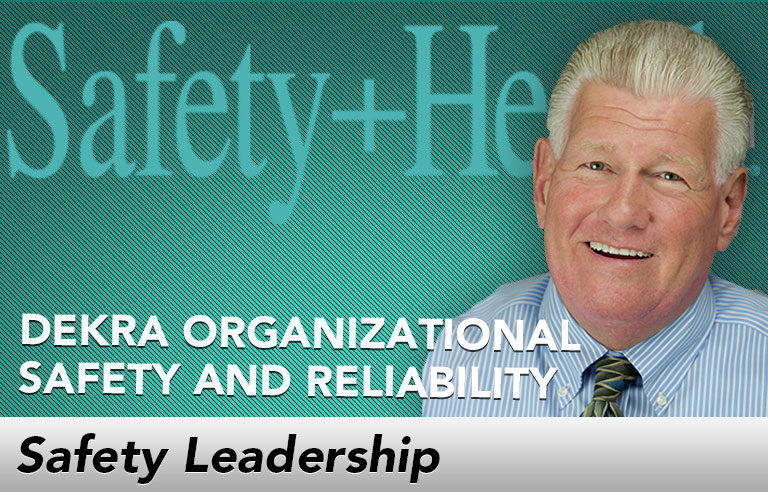Safety Leadership: Why system-focused behavior-based safety is the real deal

Editor’s Note: Achieving and sustaining an injury-free workplace demands strong leadership. In this monthly column, experts from global consulting firm DEKRA Insight share their point of view on what leaders need to know to guide their organizations to safety excellence.
For more than 40 years, behavior-based safety has been of serious interest in management circles. And it’s no wonder: The science of behavioral change applies perfectly to the real world of safety problems in the workplace.
However, when ideas prove popular, they tend to become fads and get oversimplified. Organizations that implement oversimplified BBS systems are shortchanging themselves and their people.
I’m a firm believer in real BBS, by which I mean science-based and system-focused BBS. In system-focused BBS, the benefits begin with safety, but go further to change the way people think and organizations operate. That’s where the real payoff comes.
Let’s look at how system-focused BBS differs from cookie-cutter BBS. In the cookie-cutter version, the focus is narrow: simply improving the safety behavior of employees. Experts compile a list of problem behaviors – those that they believe could lead to incidents and injuries. Armed with the list, they observe and give feedback in an effort to make workers adopt safer behaviors as quickly and efficiently as possible.
This is shortsighted for several reasons:
- There’s no guarantee that the behaviors the “experts” identified are critical for that workplace.
- There’s no buy-in from employees, so they often resent the feedback and resist changing their behavior.
- The reason employees often take risks is because the systems in which they’re working make it difficult or even impossible to do their jobs without taking risks. Management is choosing to change or manage behavior rather than change the system, so the exposure to risk is still there.
Here’s an example: A pipe fitter and a helper need to change a gasket on a pipeline that abuts a wall. Both are wearing prescribed personal protective equipment (helmets and safety goggles). The pipeline is supposed to be clear of chemicals, so, in theory, this is a safe operation.
However, to take the flange apart means they must loosen the bolts. This means the helper must stand in front of the pipeline to reach and loosen the bolts. As he does so, hot material sprays from the flange. The line wasn’t clear and the helper suffered a burn injury. The location of the flange required him to stand in the line of fire to loosen it. As we all know, you should never assume a line is clear, and you should never stand in the line of fire.
Management can teach workers to be more careful when reaching over to loosen the bolts. It also can ask maintenance to change the location of the bolts so the helper can do the job without standing in the line of fire. If either change is made, the potential for an exposure is permanently reduced – maybe even eliminated. Obviously, this system-based solution is the better solution.
System-focused BBS seeks to find, reduce or eliminate exposures that lead to incidents by improving the systems that run the organization. To be successful, this effort should engage employees at all levels. Management should set objectives, allocate adequate resources, establish the governing structure, and set the rules for exposure reduction and for how the behavior-based process will work. A system-focused BBS process involves employees and supervisors observing fellow employees, giving feedback to change problem behaviors, learning safer behaviors themselves, and gathering and analyzing data to track progress.
The system approach works because it makes jobs safer, so employees don’t have to take extra care to avoid getting hurt. It also addresses objectives beyond safety, such as improving worker engagement and, generally, achieving a healthier, performance-focused culture.
When employees see a system benefiting them and the organization, BBS becomes a want-to activity – not a have-to activity – and the whole workforce is safer as a result.
This article represents the views of the author and should not be construed as a National Safety Council endorsement.
 For over three decades, Jim Spigener, chief client officer at DEKRA Organizational Safety and Reliability (dekra.us), has helped hundreds of companies globally design, prepare and implement successful safety solutions at every organizational level, from the C-suite to shop floor personnel.
For over three decades, Jim Spigener, chief client officer at DEKRA Organizational Safety and Reliability (dekra.us), has helped hundreds of companies globally design, prepare and implement successful safety solutions at every organizational level, from the C-suite to shop floor personnel.
Direct to your inbox: Sign up to be notified in email about new "Safety Leadership" columns.
Post a comment to this article
Safety+Health welcomes comments that promote respectful dialogue. Please stay on topic. Comments that contain personal attacks, profanity or abusive language – or those aggressively promoting products or services – will be removed. We reserve the right to determine which comments violate our comment policy. (Anonymous comments are welcome; merely skip the “name” field in the comment box. An email address is required but will not be included with your comment.)

